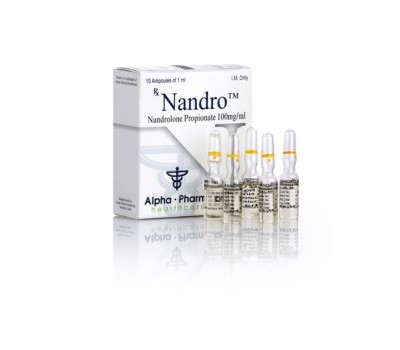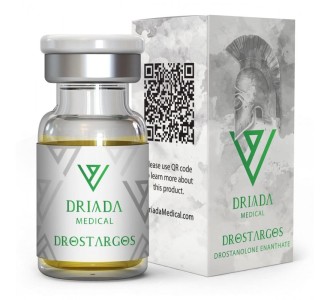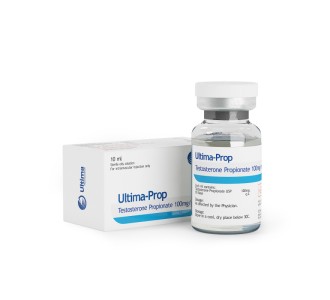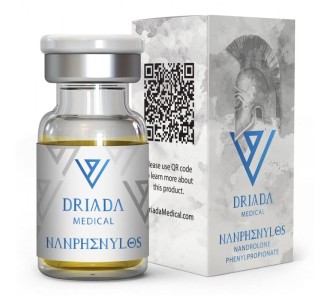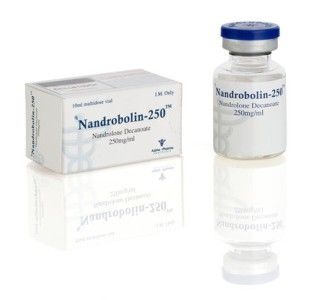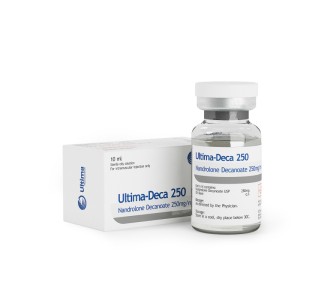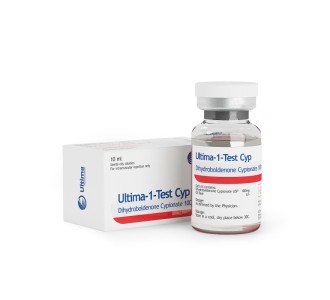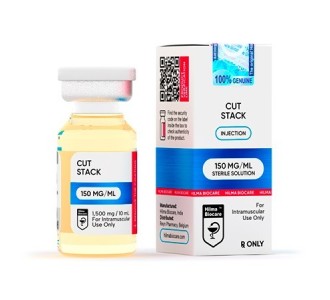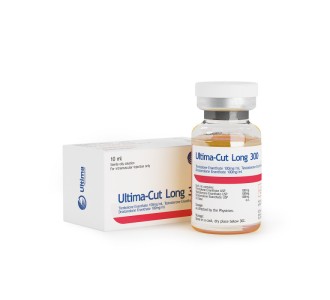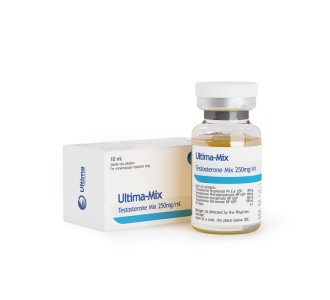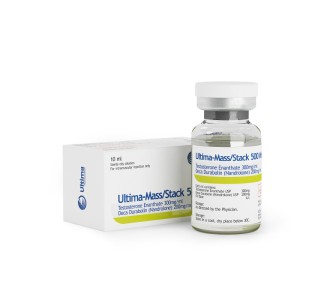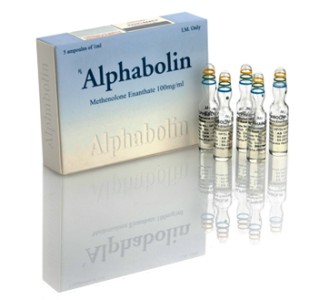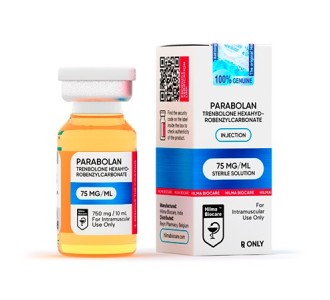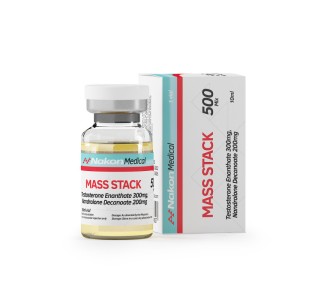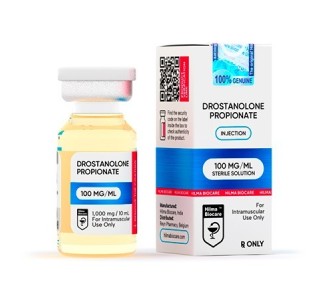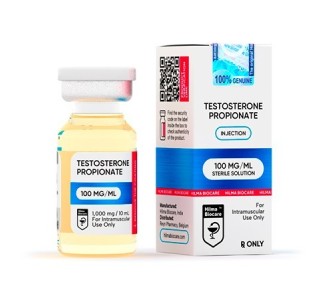Description:
Nandrolone phenylpropionate is an injectable form of the anabolic steroid nandrolone. The properties of this drug are strikingly similar to those of Deca-Durabolin, which uses the slower acting drug nandrolone decanoate. The primary difference between these two preparations is the speed in which nandrolone is released into the blood. While nandrolone decanoate provides a release of nandrolone from the area of injection lasting approximately 3 weeks, nandrolone phenylpropionate is active for only about a week. In clinical situations, Deca-Durabolin can thus be injected once every 2 or 3 weeks, while Durabolin is usually administered every several days to once weekly. Otherwise, the two drugs are virtually interchangeable. Like Deca-Durabolin is valued by athletes and bodybuilders for its abilities to promote strength and lean muscle mass gains without significant estrogenic or androgenic side effects.
Structural Characteristics:
Nandrolone decanoate is a modified form of nandrolone, where a carboxylic acid ester (propionic phenyl ester) has been attached to the 17-beta hydroxyl group. Esterified steroids are less polar than free steroids, and are absorbed more slowly from the area of injection. Once in the bloodstream, the ester is removed to yield free (active) nandrolone. Esterified steroids are designed to prolong the window of therapeutic effect following administration, allowing for a less frequent injection schedule compared to injections of free (unesterified) steroid. Nandrolone phenylpropionate provides a sharp spike in nandrolone release 24 – 48 hours following deep intramuscular injection, and declines to near baseline levels within a week.
Side Effects (Estrogenic):
Nandrolone has a low tendency for estrogen conversion, estimated to be only about 20% of that seen with testosterone. This is because while the liver can convert nandrolone to estradiol, in other more active sites of steroid aromatization such as adipose tissue nandrolone is far less open to this process. Consequently, estrogen-related side effects are a much lower concern with this drug than testosterone. Elevated estrogen levels may still be noticed with higher dosing, however, and may cause side effects such as increased water retention, body fat gain, and gynecomastia. An anti-estrogen such as clomiphene citrate or tamoxifen citrate may be necessary to prevent estrogenic side effects if they occur. One may alternately use an aromatase inhibitor like Arimidex (anastrozole), which more efficiently controls estrogen by preventing its synthesis. Aromatase inhibitors can be quite expensive in comparison to anti-estrogens, however, and may also have negative effects on blood lipids.
It is of note that nandrolone has some activity as a progestin in the body. Although progesterone is a c-19 steroids, removal of this group as in 19-norprogesterone creates a hormone with greater binding affinity for its corresponding receptor. Sharing this trait, many 19-nor anabolic steroids are shown to have some affinity for the progesterone receptor as well. The side effects associated with progesterone are similar to those of estrogen, including negative feedback inhibition of testosterone production and enhanced rate of fat storage. Progestins also augment the stimulatory effect of estrogens on mammary tissue growth. There appears to be a very strong synergy between these two hormones here, such that gynecomastia might even occur with the help of progestins, without excessive estrogen levels. The use of an anti-estrogen, which inhibits the estrogenic component of this disorder, is often sufficient to mitigate gynecomastia caused by nandrolone.
Side Effects (Androgenic):
Although classified as an anabolic steroid, androgenic side effects are still possible with this substance, especially with higher doses. This may include bouts of oily skin, acne, and body/facial hair growth. Anabolic/androgenic steroids may also aggravate male pattern hair loss. Women are also warned of the potential virilizing effects of anabolic/androgenic steroids. These may include a deepening of the voice, menstrual irregularities, changes in skin texture, facial hair growth, and clitoral enlargement. Nandrolone is a steroid with relatively low androgenic activity relative to its tissue-building actions, making the threshold for strong androgenic side effects comparably higher than with more androgenic agents such as testosterone or methandrostenolone. It is also important to point out that due to its mild androgenic nature and ability to suppress endogenous testosterone, nandrolone is prone to interfering with libido in males when used without another androgen.
Note that in androgen-responsive target tissues such as the skin scalp, and prostate, the relative androgenicity of nandrolone is reduced by its reduction to dihydronandrolone (DHN). The 5-alpha reductase enyzme is responsible for this metabolism of nandrolone. The concurrent use of a 5-alpha reductase inhibitor such as finasteride will interfere with site-specific reduction of nandrolone action, considerably increasing the tendency of nandrolone to produce androgenic side effects. Reductase inhibitors should be avoided with nandrolone if low androgenicity is desired.
Side Effects (Hepatotoxicity):
Nandrolone is not c-17 alpha alkylated, and not known to have hapatotoxic effects in healthy subjects. Liver toxicity is unlikely.
Side Effects (Cardiovascular):
Anabolic/androgenic steroids can have deleterious effects on serum cholesterol. This includes a tendancy to reduce HDL (good) cholesterol values and increase LDL (bad) cholesterol values, which may shift the HDL to LDL balance in a direction that favors greater risk of arteriosclerosis. The relative impact of an anabolic/androgenic steroid on serum lipids is dependent on the dose, route of administration (oral vs. injectable) type of steroid (aromatizable or non-aromatizable), and level of resistance to hepatic metabolism. Studies administering 600mg of nandrolone decanoate per week for 10 weeks demonstrated a 26% reduction in HDL cholesterol levels. This suppression is slightly greater than that reported with an equal dose of testosterone enanthate, and is in agreement with earlier studies showing a slightly stronger negative impact on HDL/LDL ratio with nandrolone decanoate as compared to testosterone cypionate. Nandrolone decanoate should still have a significantly weaker impact on serum lipids than c-17 alpha alkylated agents. Anabolic/androgenic steroids may also adversely affect blood pressure and triglycerides, reduce endothelial relaxation, and support left ventricular hypertrophy, all potentially increasing the risk of cardiovascular disease and myocardial infarction.
Side Effects (Testosterone Suppression):
All anabolic/androgenic steroids when taken in doses sufficient to promote muscle gain are expected to suppress endogenous testosterone production. Studies administering 100mg per week of nandrolone decanoate for 6 weeks have demonstrated an approximate 57% reduction in serum testosterone levels during therapy. At a dosage of 300mg per week, this reduction reached 70%. It is believed that the progestational activity of nandrolone notably contributes to the suppression of testosterone synthesis during therapy, which can be marked in spite of low tendency for estrogen conversion. Without the intervention of testosterone-stimulating substances, testosterone levels should return to normal within 2 – 6 months of drug succession. Note that prolonged hypogonadotrophic hypogonadism can develop secondary to steroid abuse, necessitating medical intervention.
Administration (Men):
For general anabolic effects, early prescribing guidelines recommended a dosage of 25 – 50mg per week for 12 weeks. The usual dosage of 25 – 50mg per week for 12 weeks. The usual dosage for physique- or performance-enhancing purposes is in the range of 200 – 400mg per week, taken in cycles of 8 to 12 weeks in length. This level is sufficient for most users to notice measurable gains in lean muscle mass and strength. Note that due to the fast-acting nature of the phenylpropionate ester, the weekly dosage is usually subdivided into 2 separate applications spaced evenly apart.
Administration (Woman):
For general anabolic effects, early prescribing guidelines recommend a dosage of 25 – 50mg per week for 12 weeks. When used for physique- or performance-enhancing purposes, a dosage of 50mg per week (given in a single weekly injection) is most common, taken for cycle lasting 4 to 6 weeks. Higher doses or longer durations of use are discouraged due to potential for androgenic side effects. Although only slightly androgenic, women are occasionally confronted with virilization symptoms when taking this compound. Should virilizing side effects become a concern, nandrolone phenylpropionate should be discontinued immediately to help prevent a permanent appearance.
Tags: nandro 10 amps 100mg per ml, alph0011, alpha pharma healthcare, brands, injectable products, nandrolone propionate
 English
English Deutsch
Deutsch
